July 13, 2021 | By Tony Wong Palms
Photos by Will Lytch
Through September 1
Free
USF Contemporary Art Museum
and Online with Text, Video and Audio
Details here

This exhibition Skyway, A Contemporary Collaboration 20/21 requires effort. Well, all art endeavors request some form of effort from their audience, but Skyway is a diva. Those willing will end up visiting four museums – that’s a round trip drive of over 130 miles, crossing two long over-troubled-water bridges, through three counties, all during Florida’s hurricane season – layering the content and, as wine tasters would say, the “terroir” of the Skyway experience.
The three counties are Sarasota, Pinellas and Hillsborough. The four museums are The John and Mable Ringling Museum of Art, St. Petersburg’s Museum of Fine Arts (MFA), Tampa Museum of Art (TMA) and the Contemporary Art Museum (CAM) on the University of South Florida’s Tampa campus.
For this iteration of Skyway, guest juror, Claire Tancons selected 52 artists that the curators from each museum organized into installations best fitted to their institution’s gallery space. The storyboard on this coordinated four museum endeavor is that the curation of Skyway in any one museum could stand as an autonomous exhibition. But like squares in a community quilt, each is a fully-formed work, sewn together tell a more profound story of the visual aesthetics currently being practiced and explored in this central Florida region.
This article will focus on Skyway as it now lives at the USF CAM, where I also happen to be employed as exhibition designer. It was a privilege working with curator Sarah Howard and each of the eight artists in the placement and installation of their works.

Howard roughly organized the works around material investigation, process, and transformation into visual language. In the exhibition brochure, she writes with detail on each artist and their intent, concluding “Collectively, the works create an expanded dialogue that speaks to our current moment, engaging and reflecting the social challenges of our time.”
The checklist of works can only be described as eclectic, in materials, in process, in style, in volume, in presentation, in maturity, in every way. They go outward, inward, sideways, up and down, forward and back – and if the galleries had no walls, they go in that direction too.
Wide ranging and diverse of origin, the pieces all somehow find their space and place, making an urbanscape where unlike and like mix – and becoming a type of geologic aggregate, part of an orchestrated whole.
There is Ry McCullough, the ground base, the rhythmic bass, compositional repetition through each gallery, with slight variations of jazz, with a pun, reaching into the past perfect game of pitcher Sandy Koufax, building patterns from this American pastime with rules that can be as baffling as these squiggly lines and dots becoming alphabet becoming language becoming art. The alchemist artist with his philosopher’s stone.
Riding over this is the tuba and trombones of Cynthia Mason, her fabric wall sculptures scattered through the galleries like abandoned architecture dotting our landscape, providing both gravity and levity. Gravity in the structures succumbing under their own weight, levity where sometimes the only possible response to hubris is laughter, maybe not of mirth, maybe of recognizing one’s nemesis – and turning that into art because nature and existence continues, and we must elevate.
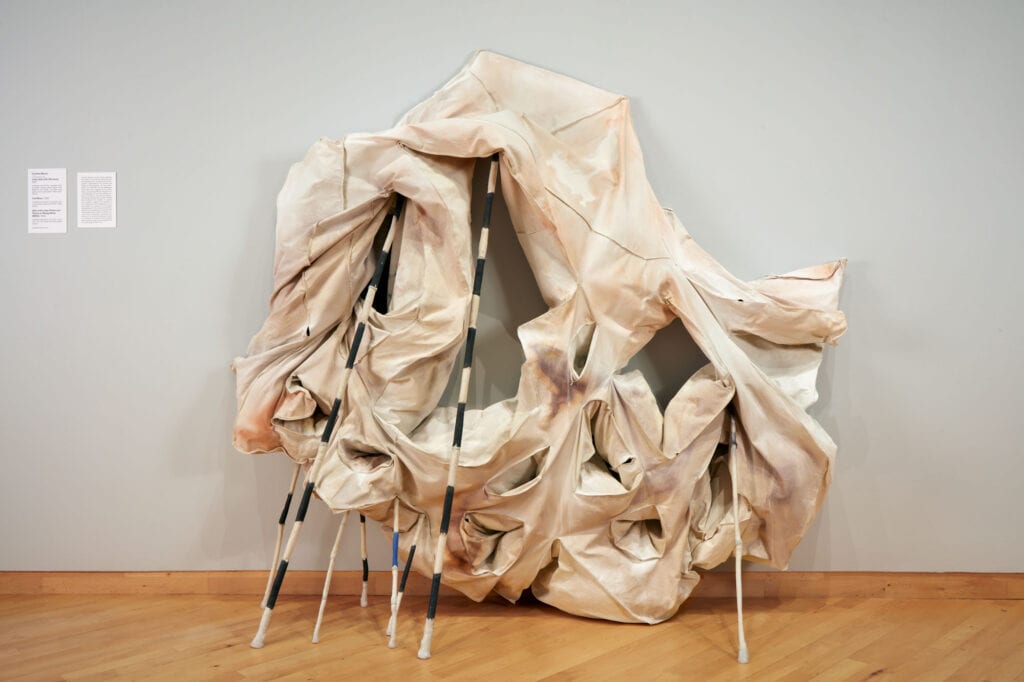
. . .
Enter the marimbas with rhythm and melody, a composition of 13 of Babette Herschberger’s dimensional flat paintings – some big, some postcard-size – stretches on the wall edge to edge, creating a landscape of internalized external elements, like a poet giving meaning where none existed. Something very simple, a favorite song one plays over and over.
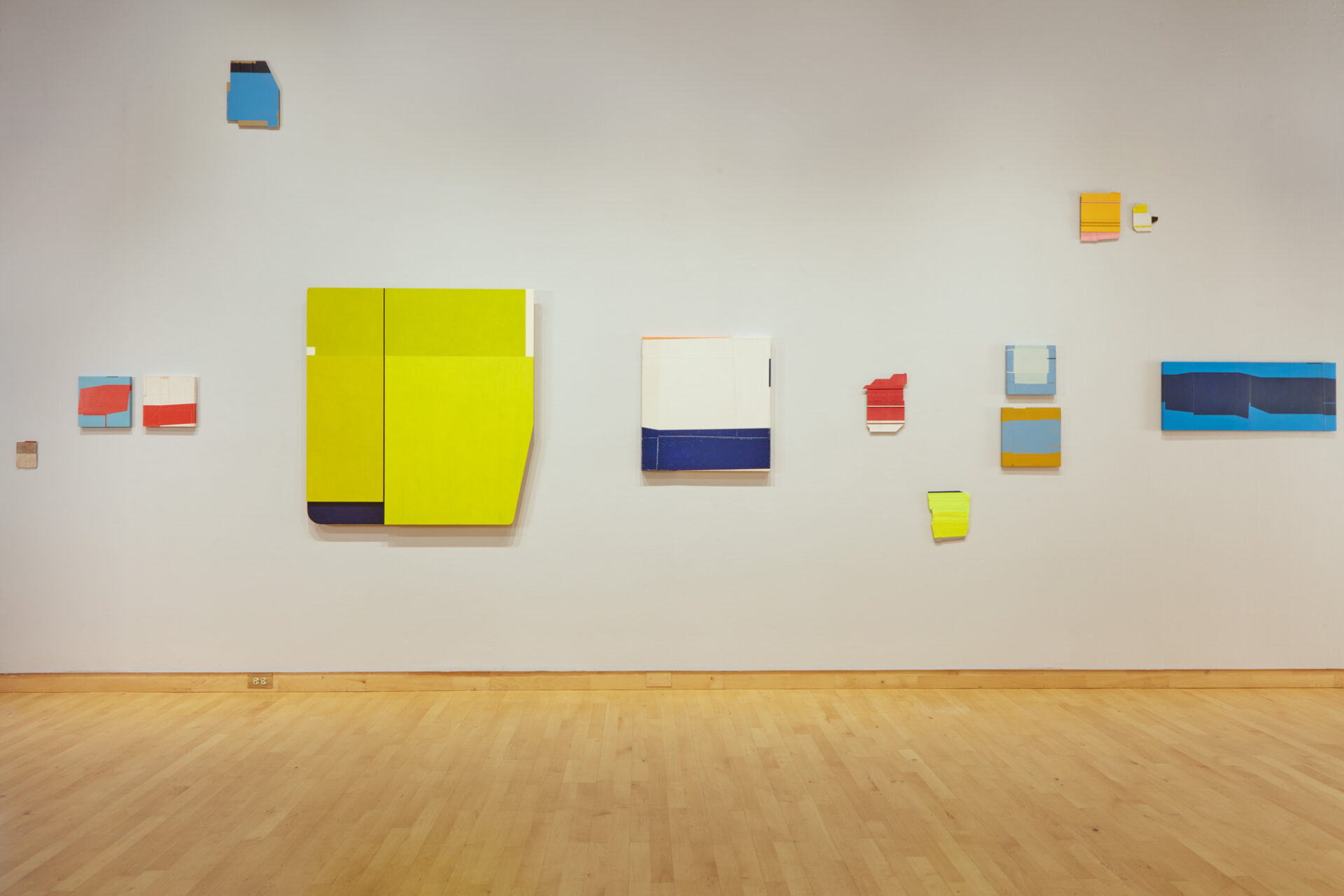
. . .
Opposite in the 45-degree corner is Akiko Kotani’s dramatic Red Falls, a continuous glissando of the harp, streams of deep red cascading from 12 feet up, forming a river delta on the floor. Red is such an iconic color, referencing danger, revolution, passion, boldness, blood. In this case that of women, endlessly flowing from an unseen/unknown source, like the un-recognized mundane labor of women, the complex simplicity of daily repetition pouring out, resulting in a cornucopia of fruits which we all consume.
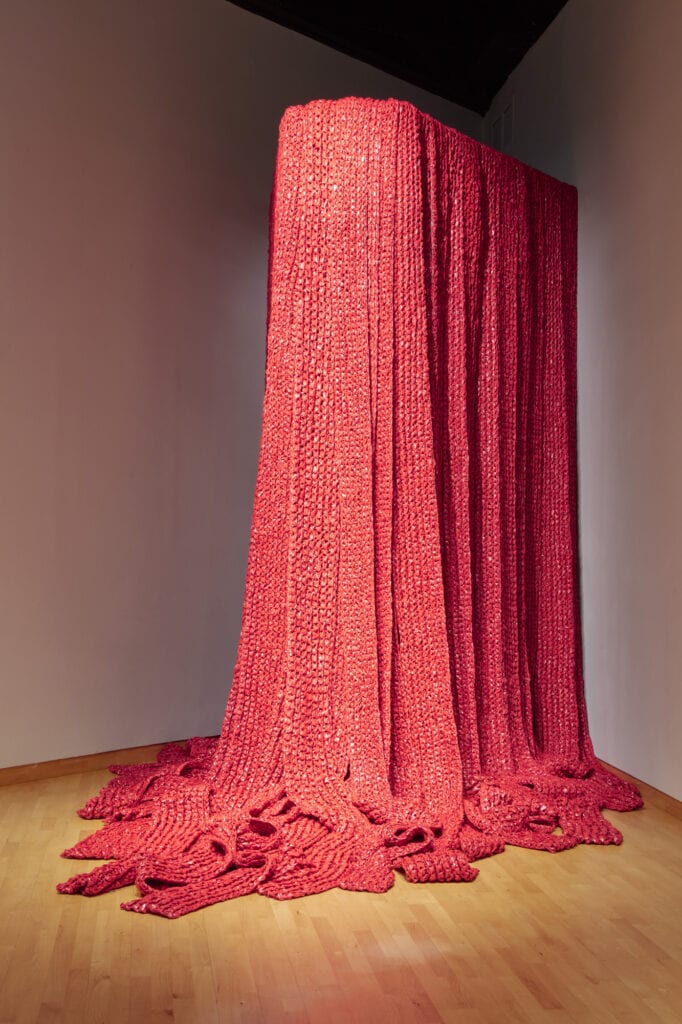

. . .
Sound of the flute calls from the 45-degree corner in the next gallery, Casey McDonough’s dot to line to plane to spheres site-specific installation. It’s melodic, silvery, gliding light and airy notes flowing in and out. McDonough has created what could be interpreted as the cosmos, and/or the quantum world of elemental particles, the micro/macro recalling William Blake’s “See the world in the grain of sand, and heaven in a wild flower. Hold infinity in the palm of your hand, and eternity in an hour.”
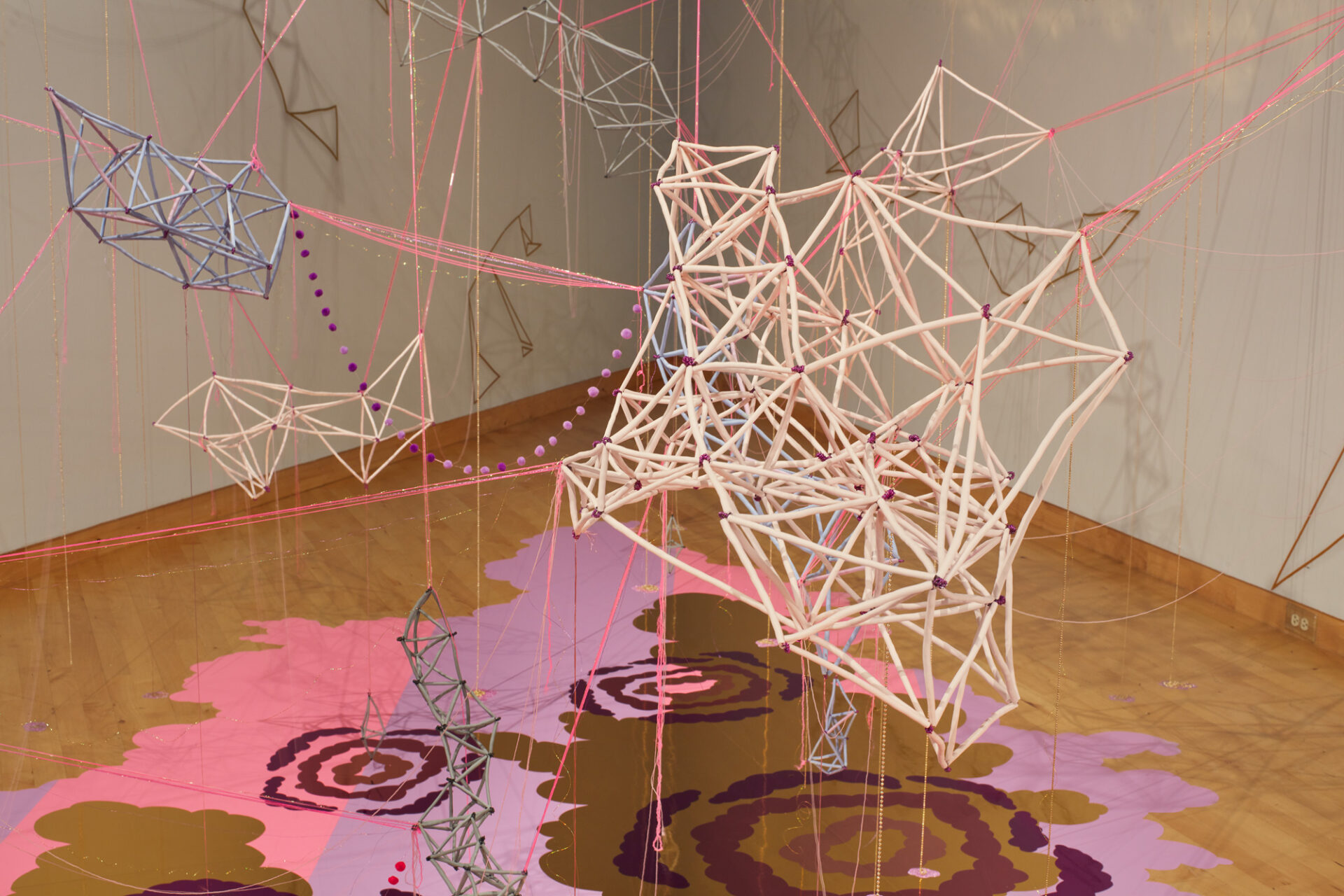
. . .
Facing this are Rosemarie Chiarlone’s piano pieces, playing from pianissimo to mezzo to forte, her four works sound through the galleries. An artist book, a line of weathered bricks and perforated paper installation like a cut on the floor, a grid of delicate embroidered silk chiffon nailed to the wall like flesh to the cross, and large perforated sheets of white paper like lace form another grid next to Red Falls. This is a dramatic interplay between the meek and the powerful, the inner sanctuary and the public square, navigating this duality when one’s only guide is surety in the self.
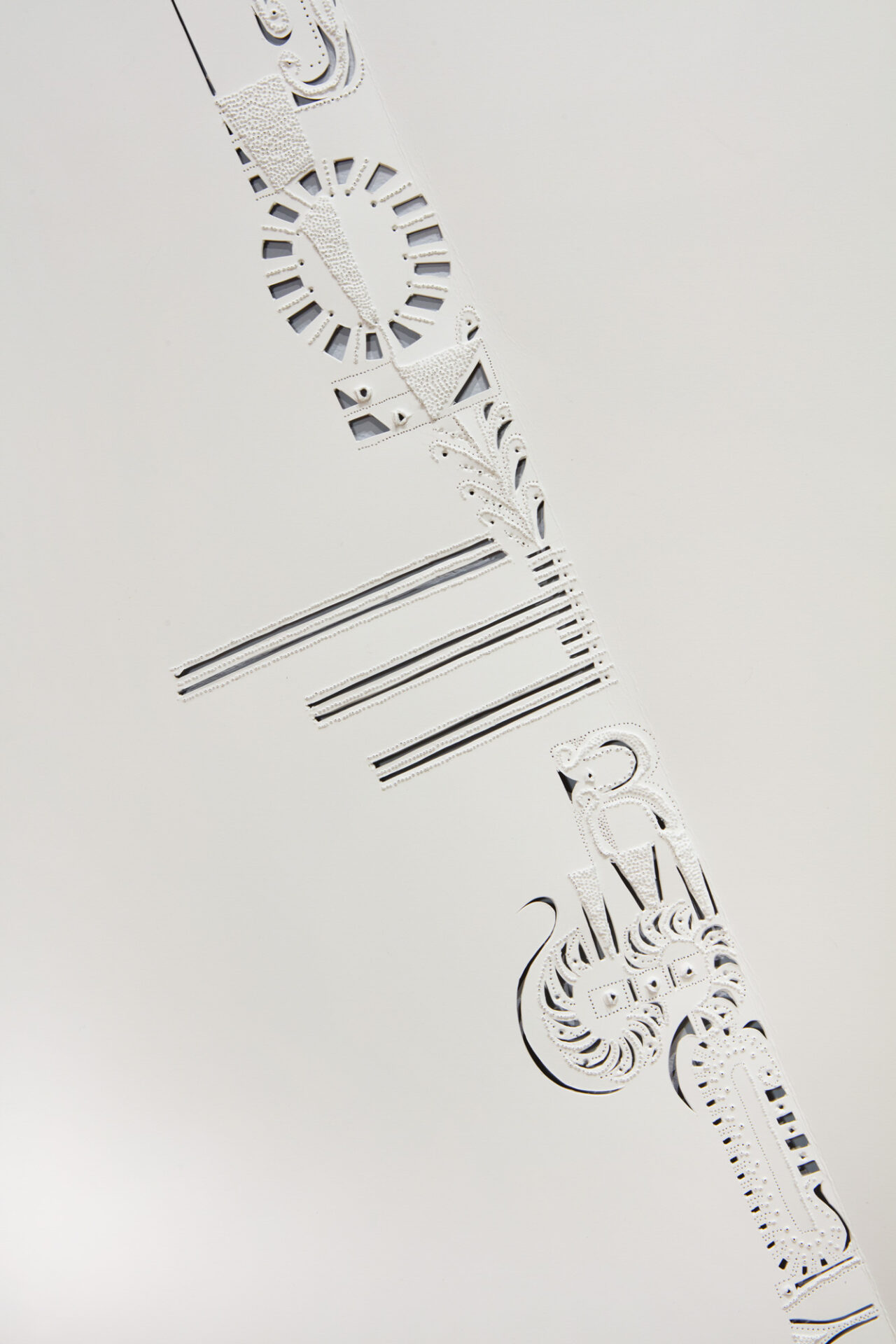
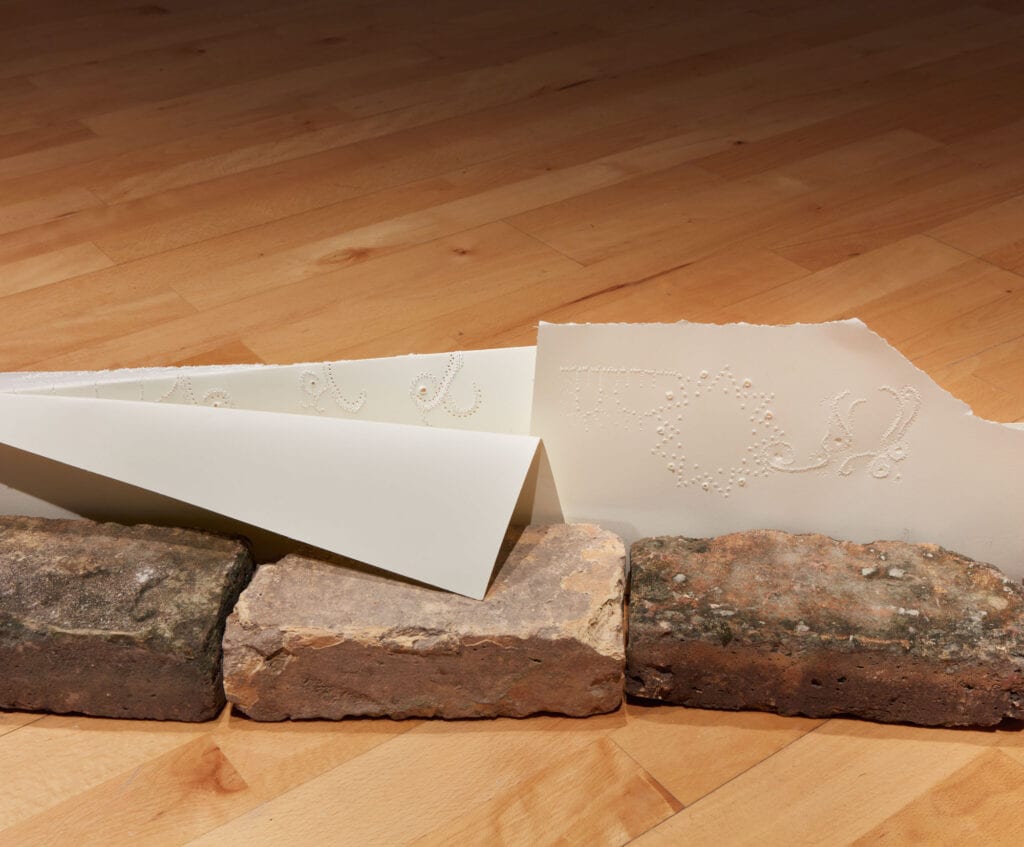
8-1/2 x 140-1/2 x 16 in. Installation view of Skyway 20/21 exhibition at USF Contemporary Art Museum.
. . .
Kodi Thompson beats Earth’s drums, from which he gathers the substance to build his thick extruded clay bodies, like boulders the ancients placed in their rock circles whose meanings are lost in time, these monoliths now scaled way way down. Works that while still heavy, can be lifted by one human hand, as in the mega dinosaurs now needing field glasses to see their descendants in a contemporary birders’ watch list. Amazing how evolutionary scientists are able to trace the long and convoluted lineages. And even more amazing how DNA survives and adapts through millennia of geologic and human upheavals. But here we are, looking this grid of colorful extrusions mounted on a wall, like specimens, or product samples for a builder.
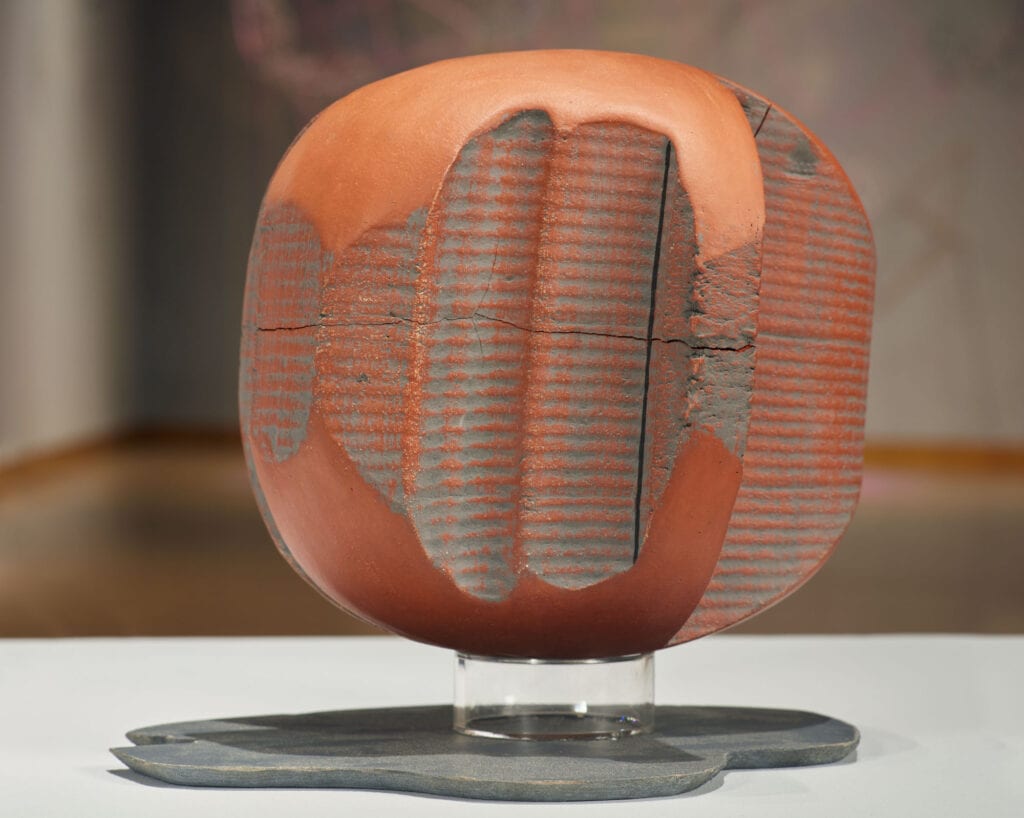
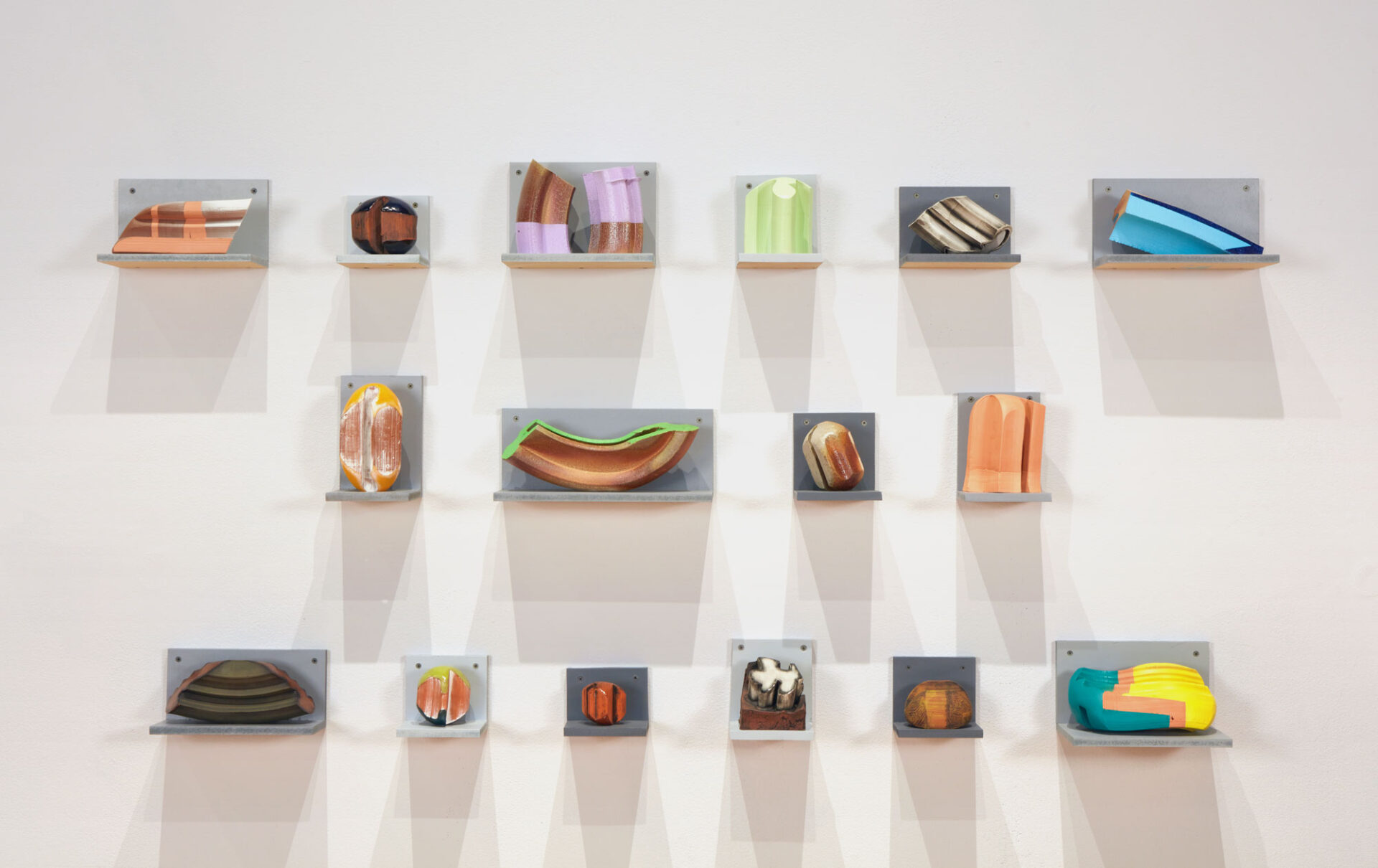
. . .
We end with Danny Dobrow, or maybe his alter ego, who really is the first encounter when entering CAM. He is the string section with the violins, violas, cellos, conjuring, creating like the sorcerer’s apprentice in Fantasia – in this case, inventing a fictitious Martin Martin, the protagonist of these works with a long artistic arc, going from a profitable career producing generic consumer wares to a total questioning and upheaval of said career, to a phoenix rising from the shards – to exhibiting that transformed aesthetic.
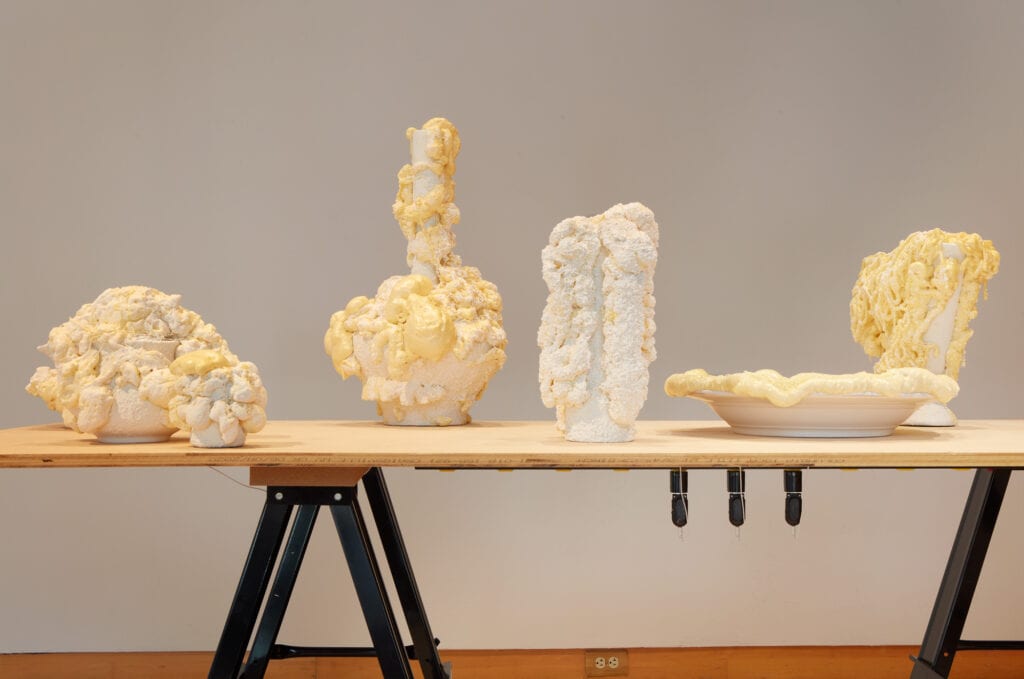
. . .
Dobrow follows a long tradition of artists imagining an artistic culture narrative, one recent being Damien Hirst financing an oceanic archeological expedition to a sunken wreck full of fantastical sea encrusted antiquities with questionable historical context, then exhibiting these “finds” in an outsize exhibition.
Skyway mines the rich fertile ground that is our home. It’s a mirror where we might recognize another aspect of our undiscovered self.. . .
Explore this exhibit in-person or online. Find museum information, an exhibition catalog, a virtual tour, audio, text, images and recordings of artist conversations here.
The closing reception is August 27 from 7-9 pm at the USF Contemporary Art Museum. Details here.



